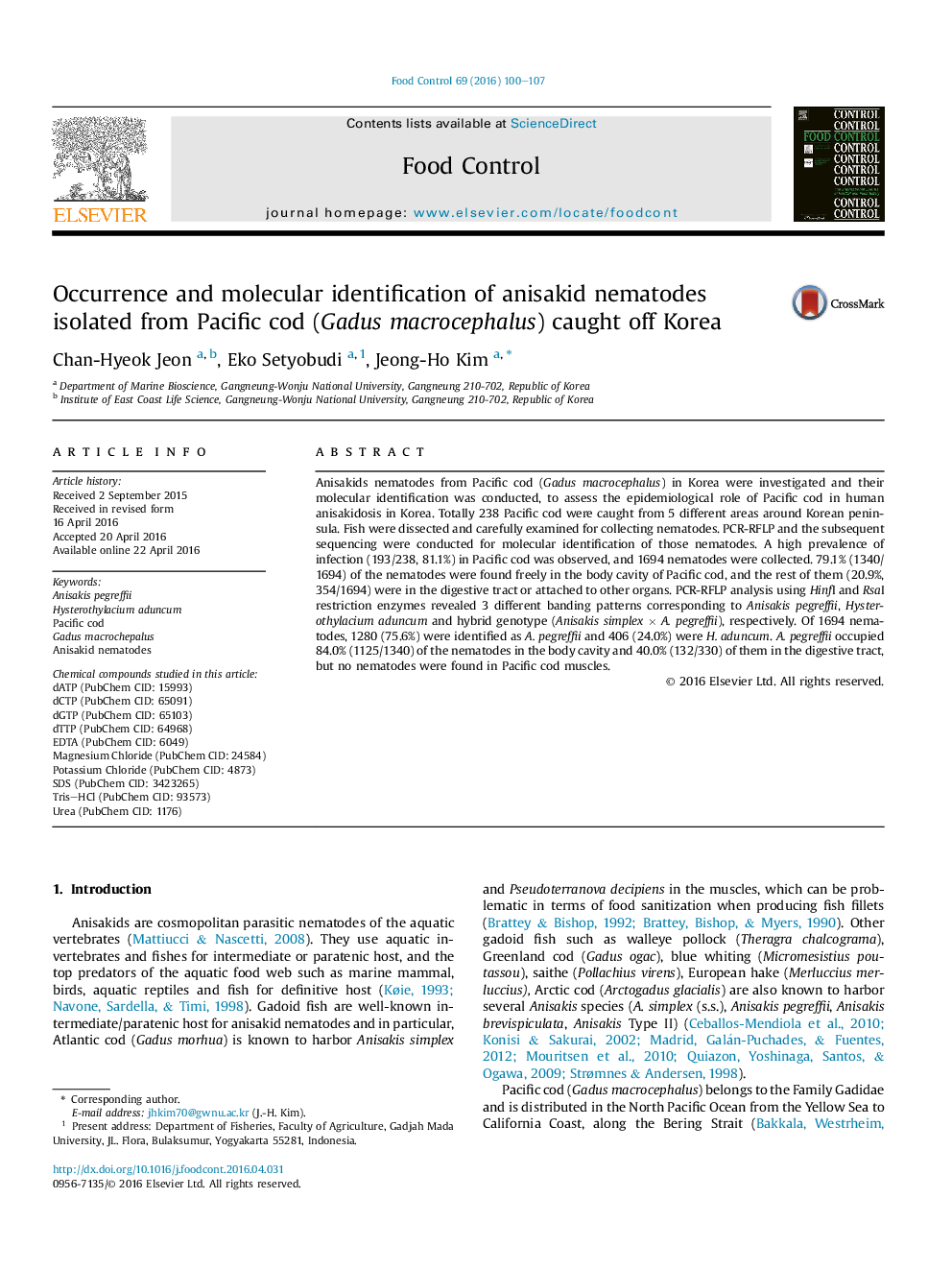| Article ID | Journal | Published Year | Pages | File Type |
|---|---|---|---|---|
| 6390019 | Food Control | 2016 | 8 Pages |
â¢Pacific cod were investigated for the presence of anisakid nematodes.â¢1694 nematodes were found in 193 of 238 Pacific cod.â¢No nematodes were found in Pacific cod muscles.â¢99.6% of the nematodes were identified as Anisakis pegreffii or Hysterothylacium aduncum.â¢Pacific cod is thought to be of little concern for human anisakidosis.
Anisakids nematodes from Pacific cod (Gadus macrocephalus) in Korea were investigated and their molecular identification was conducted, to assess the epidemiological role of Pacific cod in human anisakidosis in Korea. Totally 238 Pacific cod were caught from 5 different areas around Korean peninsula. Fish were dissected and carefully examined for collecting nematodes. PCR-RFLP and the subsequent sequencing were conducted for molecular identification of those nematodes. A high prevalence of infection (193/238, 81.1%) in Pacific cod was observed, and 1694 nematodes were collected. 79.1% (1340/1694) of the nematodes were found freely in the body cavity of Pacific cod, and the rest of them (20.9%, 354/1694) were in the digestive tract or attached to other organs. PCR-RFLP analysis using HinfI and RsaI restriction enzymes revealed 3 different banding patterns corresponding to Anisakis pegreffii, Hysterothylacium aduncum and hybrid genotype (Anisakis simplex Ã A. pegreffii), respectively. Of 1694 nematodes, 1280 (75.6%) were identified as A. pegreffii and 406 (24.0%) were H. aduncum. A. pegreffii occupied 84.0% (1125/1340) of the nematodes in the body cavity and 40.0% (132/330) of them in the digestive tract, but no nematodes were found in Pacific cod muscles.
